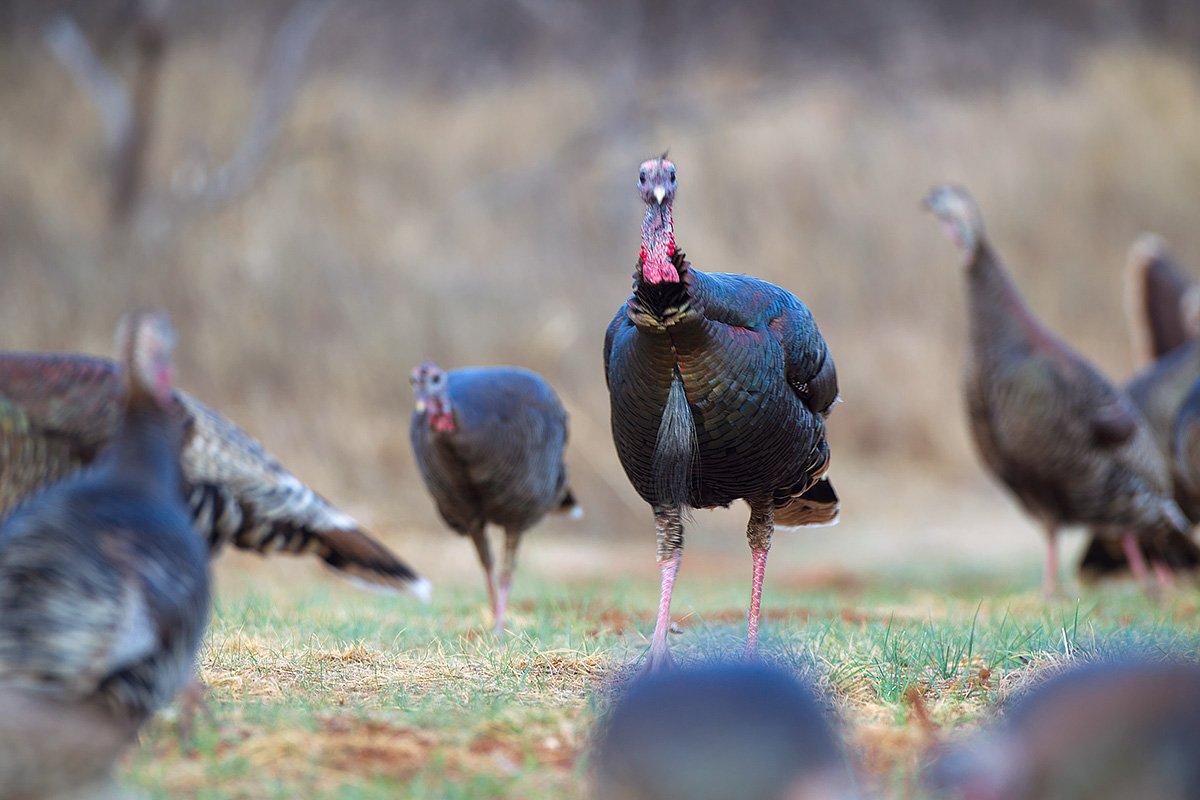Locate roosts, preferred food sources, and sign to score this autumn season
Fall turkey flocks start the day with so much racket you need to be there when it happens, because it fades into silence just as fast.
Sure, if you sit on your back porch every morning and watch a distant gobbler gang ease into a green corner pasture on your property, well, you probably don't need advice — assuming this pattern holds into early fall turkey season.
That said, if they vaporize into the adjacent rolling hardwoods and never come back, leaving you with no clue as to where they went, you might just want to give this a read.
The Pregame: Roosts
Scout with your state's opening day of fall turkey season in mind (always check regulations, as some states only manage for spring gobblers, and wildlife agencies may set other limitations). Be on a ridgetop or high field point, listening a half-hour before daybreak until fly-down time. Study how the flock moves from those noisy roosts to feeding areas. In season, set up near those roosted turkeys before fly-down — between those trees and food sources — or right at the mast-bearing ridgetop, hollow, or pasture they will likely head toward. Yep, autumn food sources can shift, especially if your season is long, making ghostlike flocks tough to pattern. Map their movements. It starts with food.
The Chow Line: Food Sources
Fix this in your mind: Fall turkeys feed heavily after fly-down. Find the food sources, and the birds will follow. Early on, autumn birds hammer field bugs. As the season lengthens, look for turkeys to hit wild grapes, alfalfa, favored plant tubers, and beechnuts — even pine nuts. Turkeys are omnivorous, and after killing a fall turkey you are likely to find a range of edibles in its crop. I've found such choice morsels as beetles, earthworms, even small frogs and salamanders. In agricultural areas throughout the wild turkey's range, sloppily cut corn will pull in turkeys right after harvest. Even standing corn will hold these tall birds. Autumn flocks feed hard in late afternoon, too, right before fly-up time.
[Learn more: What Do Wild Turkeys Eat?]
The Sign: Tracks and More
Fresh turkey droppings, leaf scratchings, tracks in creek beds and trail mud — these are three ways to figure out where fall birds have been. Molted feathers and dusting bowls in your hunting area are two more. It is important to note the age of such evidence. The relative dryness of the droppings will tell you if the turkeys were just in that spot. Study scratched-up areas revealing fresh soil at a food source. Same goes for muddy tracks. Molted feathers, if clean and intact, and freshly used dusting bowls signal reliable evidence. Once you're aware of where turkeys roost and feed, and when birds have been there, you can then pinpoint how they move from overnight resting spots to eat. Plot the daily movements of birds.
The Hunt: Blind or Bust
Okay, you have found the roost, the food specific flocks want, and the many other signs of turkey activity. Now, you need to get birds into range of your gun or bow. Hatch a plan to hunt with a pop-up blind, waiting passively near areas of heavy use. Or take a more active approach and try to locate turkeys on the move as you hunt.
How? To get a fix on their whereabouts, pause to call while actively still-hunting. A bird or two will occasionally reply to your clucks, yelps, and other turkey vocalizations. Once you get a fix on a mobile fall flock, use terrain to your advantage and move in to scatter birds on foot (or with a dog, where legal). Then set up for the callback. This traditional fall hunting method is plenty of fun, as the gregarious birds work to your calling position like spokes on a wheel.
No luck? Get right back out there the next morning, listening hard for roosted turkeys — or take a more casual approach on your patterned autumn birds, hunting them on their daily rounds in the afternoon or before fly-up time.
[Realtree Video: Scatter the Flock Right]







